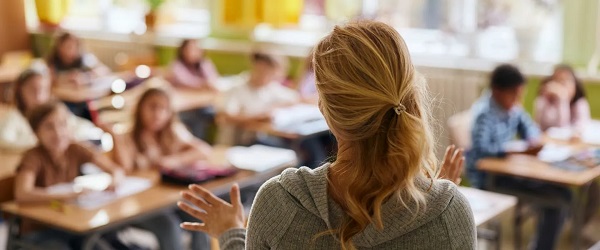Education
Why Don’t Men Go To University Any More?


What will that mean for universities…and for 21st century work?
A while back, I mentioned the strange case of the disappearing university male. In that context I wondered how the educational establishment – in whose eyes a university degree is a primary success metric – are addressing the 58% (female) to 42% (male) disparity blocking male success. But I didn’t get around to asking why it’s happening.
However, here’s a fascinating recent post from American writer Celeste Davis that dives deep, deep down the rabbit hole. The article first references a handful of more mainstream theories seeking to explain the gap, including:
- High tuition costs (which, I guess, just don’t bother women?)
- Boys having weaker academic skills
- Boys being exposed to negative messaging in early grades
- Politically left-friendly campuses that attract more women
- More high-paying career alternatives for men
Davis agrees that those are probably all contributing factors. But she turns her attention to what she feels is the big driver: male flight. Perhaps, goes the argument, young men just don’t see themselves thriving in career fields that appear to be dominated by women. The more women enrolled in last year’s university cohort, the more of this year’s men decide to check out of university altogether.
The Audit is a reader-supported publication. To receive new posts and support my work, consider becoming a free or paid subscriber.
Or, as Davis puts it:
“For every 1% increase in the proportion of women in the student body, 1.7 fewer men applied. One more woman applying was a greater deterrent than $1000 in extra tuition!”
According to Statistics Canada, overall male enrollment as a proportion of total university populations has dropped by 4.4 percent since 1992. Canada might not be experiencing the same painful overall drops in university enrollments they’re seeing south of the border, but we may not be too far behind.
All this seems to be true of universities in general, but the impact might be more visible in specific programs. In fact, the biggest changes have impacted a handful of university program categories:
- Personal, protective and transportation services – which include law enforcement and fire fighting. Male participation dropped from 85 percent of enrollment in 1992 to just 43 percent in 2021.
- Agriculture, natural resources, and conservation, which saw a decline from 55 percent to 38 percent.
- Physical and life sciences and technologies saw male enrollment drop from 49 percent to 24 percent.
- Social and behavioural sciences and law enrollment fell from 38 percent to 29 percent.
Celeste’s theory is that, rather than external forces driving declines in male participation, it’s the entry of more and more women into academic programs that lies behind the changes.
I don’t think anyone’s suggesting that the solution to the problem is to impose enrollment quotas to limit entry for women. Quotas are evil.
In fact, I’m not 100 percent convinced that this is a problem that even needs solving. That’s partly because I don’t buy the line that university is always the most reliable route to social and economic success. It’s also because I don’t see a down side to relaxing and allowing market forces to work things out for us.
One thing that is worth our attention is the damage these trends might cause the higher education industry over the long term. Upwards of three percent of Canada’s GDP can probably be attributed to the higher education sector. And Canadian universities employ more than 343,000 people – around one of every 80 employed Canadians. You and I may or may not have a direct connection to higher education, but its decline would definitely leave a mark.
It’s worth noting that, for all the chaos those trends might spark within the higher education industry, they appear to be having a surprisingly minor impact on the actual workforce. Employment data from Statistics Canada shows us that the proportion of male workers changed by less than three percentage points between 1987 and 2023 in all but a few of the 18 job categories tracked. The exceptions included:
- Public administration, where the percentage of workers who were male fell from 61 percent in 1987 to 48 percent in 2023.
- Educational services, which saw the number of male teachers and administrators fall ten points from a representation of 42 percent to 32 percent.
- Male participation in the finance, insurance, real estate, rental and leasing industries actually rose from 41 percent to 47 percent.
But the exceptions were far less interesting than the fields where there was no significant change. Compare the four percent drop in agricultural employment to the 30 percent by which enrollment in agriculture, natural resources and conservation programs fell.
Similarly, the 25 percent drop in male participation in science and technology programs doesn’t seem to play out in the real world: male employment in professional, scientific and technical services is effectively unchanged since 1987.
Those enrollment vs employment designations aren’t perfectly aligned, of course. And employment data does have a far longer built-in lag than university attendance. But the gaping disparity does suggest there are a lot of women signing up for courses but not following up by getting related jobs.
Subscribe to The Audit.
Alberta
Schools should go back to basics to mitigate effects of AI

From the Fraser Institute
Odds are, you can’t tell whether this sentence was written by AI. Schools across Canada face the same problem. And happily, some are finding simple solutions.
Manitoba’s Division Scolaire Franco-Manitobaine recently issued new guidelines for teachers, to only assign optional homework and reading in grades Kindergarten to six, and limit homework in grades seven to 12. The reason? The proliferation of generative artificial intelligence (AI) chatbots such as ChatGPT make it very difficult for teachers, juggling a heavy workload, to discern genuine student work from AI-generated text. In fact, according to Division superintendent Alain Laberge, “Most of the [after-school assignment] submissions, we find, are coming from AI, to be quite honest.”
This problem isn’t limited to Manitoba, of course.
Two provincial doors down, in Alberta, new data analysis revealed that high school report card grades are rising while scores on provincewide assessments are not—particularly since 2022, the year ChatGPT was released. Report cards account for take-home work, while standardized tests are written in person, in the presence of teaching staff.
Specifically, from 2016 to 2019, the average standardized test score in Alberta across a range of subjects was 64 while the report card grade was 73.3—or 9.3 percentage points higher). From 2022 and 2024, the gap increased to 12.5 percentage points. (Data for 2020 and 2021 are unavailable due to COVID school closures.)
In lieu of take-home work, the Division Scolaire Franco-Manitobaine recommends nightly reading for students, which is a great idea. Having students read nightly doesn’t cost schools a dime but it’s strongly associated with improving academic outcomes.
According to a Programme for International Student Assessment (PISA) analysis of 174,000 student scores across 32 countries, the connection between daily reading and literacy was “moderately strong and meaningful,” and reading engagement affects reading achievement more than the socioeconomic status, gender or family structure of students.
All of this points to an undeniable shift in education—that is, teachers are losing a once-valuable tool (homework) and shifting more work back into the classroom. And while new technologies will continue to change the education landscape in heretofore unknown ways, one time-tested winning strategy is to go back to basics.
And some of “the basics” have slipped rapidly away. Some college students in elite universities arrive on campus never having read an entire book. Many university professors bemoan the newfound inability of students to write essays or deconstruct basic story components. Canada’s average PISA scores—a test of 15-year-olds in math, reading and science—have plummeted. In math, student test scores have dropped 35 points—the PISA equivalent of nearly two years of lost learning—in the last two decades. In reading, students have fallen about one year behind while science scores dropped moderately.
The decline in Canadian student achievement predates the widespread access of generative AI, but AI complicates the problem. Again, the solution needn’t be costly or complicated. There’s a reason why many tech CEOs famously send their children to screen-free schools. If technology is too tempting, in or outside of class, students should write with a pencil and paper. If ChatGPT is too hard to detect (and we know it is, because even AI often can’t accurately detect AI), in-class essays and assignments make sense.
And crucially, standardized tests provide the most reliable equitable measure of student progress, and if properly monitored, they’re AI-proof. Yet standardized testing is on the wane in Canada, thanks to long-standing attacks from teacher unions and other opponents, and despite broad support from parents. Now more than ever, parents and educators require reliable data to access the ability of students. Standardized testing varies widely among the provinces, but parents in every province should demand a strong standardized testing regime.
AI may be here to stay and it may play a large role in the future of education. But if schools deprive students of the ability to read books, structure clear sentences, correspond organically with other humans and complete their own work, they will do students no favours. The best way to ensure kids are “future ready”—to borrow a phrase oft-used to justify seesawing educational tech trends—is to school them in the basics.
Business
Why Does Canada “Lead” the World in Funding Racist Indoctrination?
-

 Daily Caller1 day ago
Daily Caller1 day agoParis Climate Deal Now Decade-Old Disaster
-

 armed forces1 day ago
armed forces1 day agoOttawa’s Newly Released Defence Plan Crosses a Dangerous Line
-

 Alberta1 day ago
Alberta1 day agoAlberta’s huge oil sands reserves dwarf U.S. shale
-

 Business15 hours ago
Business15 hours agoOttawa Pretends To Pivot But Keeps Spending Like Trudeau
-

 Energy14 hours ago
Energy14 hours agoLiberals Twisted Themselves Into Pretzels Over Their Own Pipeline MOU
-

 Censorship Industrial Complex12 hours ago
Censorship Industrial Complex12 hours agoHow Wikipedia Got Captured: Leftist Editors & Foreign Influence On Internet’s Biggest Source of Info
-

 International1 day ago
International1 day agoFBI didn’t think it had cause to raid Trump but DOJ did it anyway
-

 Crime2 days ago
Crime2 days agoTrump designates fentanyl a ‘weapon of mass destruction’
















